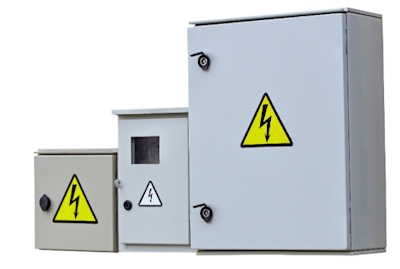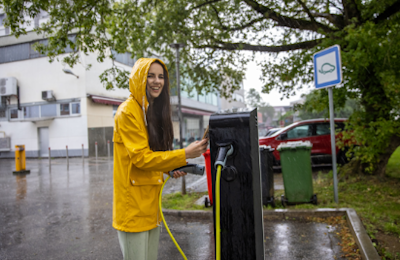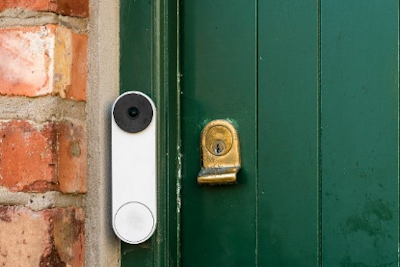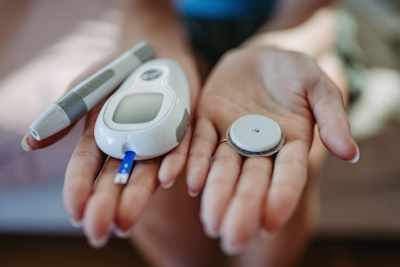
Published
by Rogers Corporation
Enclosure Institute, Elastomeric Material Solutions
Welcome back to the Enclosure Institute™, an educational series presented by two industry leaders dedicated to helping engineers navigate the complexities of enclosure sealing. By combining Rogers’ expertise in high-performance materials with Marian’s precision converting capabilities, this series provides actionable insights, tools, and strategies to tackle even the toughest enclosure challenges.
Backed by decades of experience and a deep understanding of material science and precision fabrication, this program is designed for engineers at all levels. Whether you're a seasoned pro or new to enclosure design, the Enclosure Institute™ covers everything from foundational sealing concepts to advanced techniques for optimizing enclosure performance.
Disclaimer: While this series provides valuable guidance on enclosure design and material selection, every application is unique. We encourage you to contact the Marian team directly for tailored recommendations and expert support.
At the heart of every reliable enclosure lies one critical component: the seal. Whether protecting sensitive electronics from environmental hazards or enhancing the long-term performance of a system, the seal serves as the first line of defense. Its effectiveness is critical to the functionality and longevity of enclosure systems.
Achieving a reliable seal is not just about choosing the right material- it requires a comprehensive approach. A good sealing solution addresses all aspects of the design process, such as sealing requirements, environmental exposure, material properties, and proper implementation to ensure lasting performance.
In this second blog of the Enclosure Institute™ series, we will provide an overview of enclosures, their key applications, relevant standards, and the importance of designing a comprehensive sealing solution.
What Are Enclosures and Why Are They Important?
When you think about enclosures, you probably picture a big metal box.
While that may be true in some cases, enclosures come in a variety of shapes, sizes, and materials—each designed to protect critical components from environmental challenges.
Enclosures house and protect critical components by shielding them from environmental factors like moisture, dust, and extreme temperatures. Whether used in outdoor applications or controlled indoor environments, enclosures impact the reliability, safety, and longevity of the systems they protect.
Where are Enclosures Found?
Enclosures are used across a variety of markets and applications, each with their own unique design challenges:
- Solar and Energy Storage Systems
These systems operate in harsh outdoor environments, requiring a seal material that can resist high temperatures, moisture, and dust while maintaining structural integrity over time.
- EV Charging Stations
EV charging stations are exposed to rain, dust, and a wide temperature range. Reliable seals are especially critical here to protect sensitive electronics while allowing for easy maintenance access.
- Battery Enclosures
Battery enclosures must protect critical components from moisture, dust, and temperature fluctuations. Seals prevent ingress that could lead to malfunctions, short circuits, or reduced battery life. These enclosures are found in everything from handheld power tools to electric vehicles, and sealing materials are often needed to meet stringent safety and performance standards.
- Outdoor Lighting
Outdoor lighting enclosures must withstand UV exposure, rain, and dust while maintaining reliable performance. Ingress protection (IP-rated) seals protect internal components, ensuring they can endure harsh outdoor weather conditions.
- Indoor Fuse Boxes
Even indoors, enclosures need effective sealing to protect against dust, spills, and debris. Seals may need to comply with safety standards like UL 50E.
- Smart Meters and Electrical Control Boxes
These outdoor enclosures face exposure to rain, dust, and temperature extremes. Reliable seals are essential to protect sensitive electronics and ensure long-term performance, safety, and compliance with ingress protection (IP) requirements.
- Displays
Display enclosures require seals that block moisture, dust, and cleaning solutions which can damage sensitive electronic components. These seals must also manage heat and vibration while minimizing light leakage. Additionally, they must maintain an aesthetic, hidden appearance.
- Data Centers
Data center enclosures require reliable seals to manage airflow, climate control, and dust ingress.
- Portable Electronics
Seals protect against drops, dust, water, and vibration—essential for rugged, on-the-go devices. Materials must be compact, durable, and IP-rated.
- Drones
Drone enclosures need lightweight, weather-resistant seals that withstand vibration, pressure changes, and outdoor conditions without adding weight.
- Medical
Medical device enclosures require seals that withstand cleaning agents, moisture, and frequent use. Materials must meet strict safety and biocompatibility standards like USP Class VI and ISO 10993.
Key Standards for Enclosures
Enclosures may need to comply with specific industry standards, such as:
- NEMA Ratings (National Electrical Manufacturers Association): Define protection levels against environmental hazards like dust and water.
- UL Standards (Underwriters Laboratories): Focus on safety, with UL 50E being a critical standard for electrical enclosures.
- IEC Ingress Protection (IP) Codes: International standards that specify protection against solids and liquids, such as IP67 for dust-tight and water-resistant enclosures.
Why Sealing Solutions in Enclosures Matter
The integrity of an enclosure heavily depends on the performance of its seal.
What are the repercussions of a failed seal? And what key considerations does an effective seal address?
A failed seal can lead to costly repairs, equipment damage, safety hazards, or even product failure. Choosing the right sealing material and ensuring proper implementation helps to:
- Protect against environmental exposure
- Maintain durability and long-term performance
- Meet set industry standards
An effective sealing solution addresses the following key considerations:
- Sealing Requirements: Does the seal need to comply with specific enclosure ratings such as IP or NEMA standards?
- Impact from Environmental Forces: Will the enclosure be exposed to challenging conditions such as temperature extremes, UV radiation, or prolonged water ingress?
- Material Selection: Choose materials with the right blend of properties for your unique application, such as durability, flexibility, and resistance to environmental factors.
- Design Influence: Sealing solutions must be planned out during the design phase and then properly integrated into the overall enclosure design to maximize effectiveness and reliability.
- Implementation: Proper handling and integration of the seal into the assembly process is important. Even the best materials can fail if not properly implemented.
What’s Next?
In the next few blogs of the Enclosure Institute™ series, we’ll explore:
- Enclosure Ratings: An in-depth look at NEMA, UL, CSA, and IEC standards.
- Material Selection: How to choose the best sealing material for your application.
- Design and Fabrication Considerations: Tips for creating effective, reliable seals.
- General Sealing Best Practices and Common Failure Modes: Understanding what makes seals fail and how to prevent failure.
- Case Studies: Real-world examples of effective sealing solutions created by Rogers and Marian.
Master Enclosure Sealing with the Marian and Rogers Enclosure Institute™
Sealing challenges can make or break an enclosure’s performance. Whether you're designing for environmental protection, long-term reliability, or compliance with industry standards, selecting the right materials and understanding effective sealing strategies are critical. That’s why Marian Inc. and Rogers Corporation have partnered to bring you the Enclosure Institute™ —a free learning platform designed to help engineers navigate the complexities of enclosure sealing.
Why Sign Up for The Enclosure Institute™?
Gain exclusive access to:
- Four expert-led modules with in-depth videos, allowing you to learn at your own pace
- Checklists, resources, and tools to guide your enclosure design process
- Actionable insights into real-world sealing challenges
- Certification and an Enclosure Insitute Essentials Kit completion, recognizing your expertise
The Enclosure Institute™ is designed for engineers at all levels, whether you're new to enclosure sealing or looking to refine your expertise.
Enroll today to take the next step in mastering enclosure design:
Not ready to enroll yet?
Explore more blogs on enclosure design best practices:
- Introducing the Enclosure Institute™: Expert Tools to Design Better Enclosures
- Enclosure Seal and Gasket Standards Made Easy
Your Trusted Partners in Sealing
With nearly 200 years of material expertise, 70 years of fabrication development, decades of partnership, and thousands of applications designed together, Marian and Rogers bring unmatched knowledge to enclosure sealing. By combining Rogers’ high-performance materials with Marian’s precision converting capabilities, we deliver custom-engineered solutions that enhance durability, reliability, and performance.
Whether you need expert guidance, high-quality materials, or precision-fabricated components, our partnership ensures your enclosures meet the highest industry standards while optimizing efficiency and cost-effectiveness.
Contact a Design Expert
If you have a specific enclosure challenge and need expert guidance, Marian's team is ready to help. Contact Marian directly for tailored recommendations and support.
Published on Apr 23, 2025



